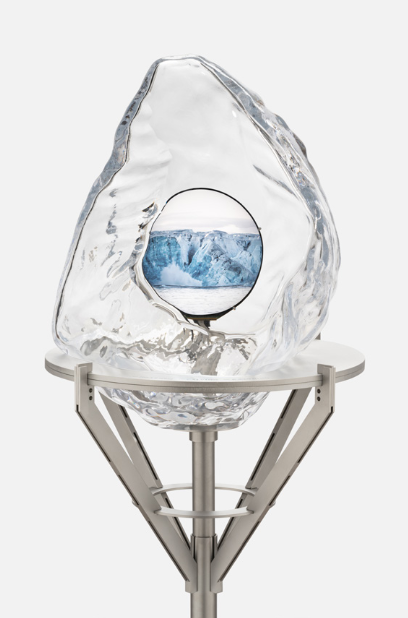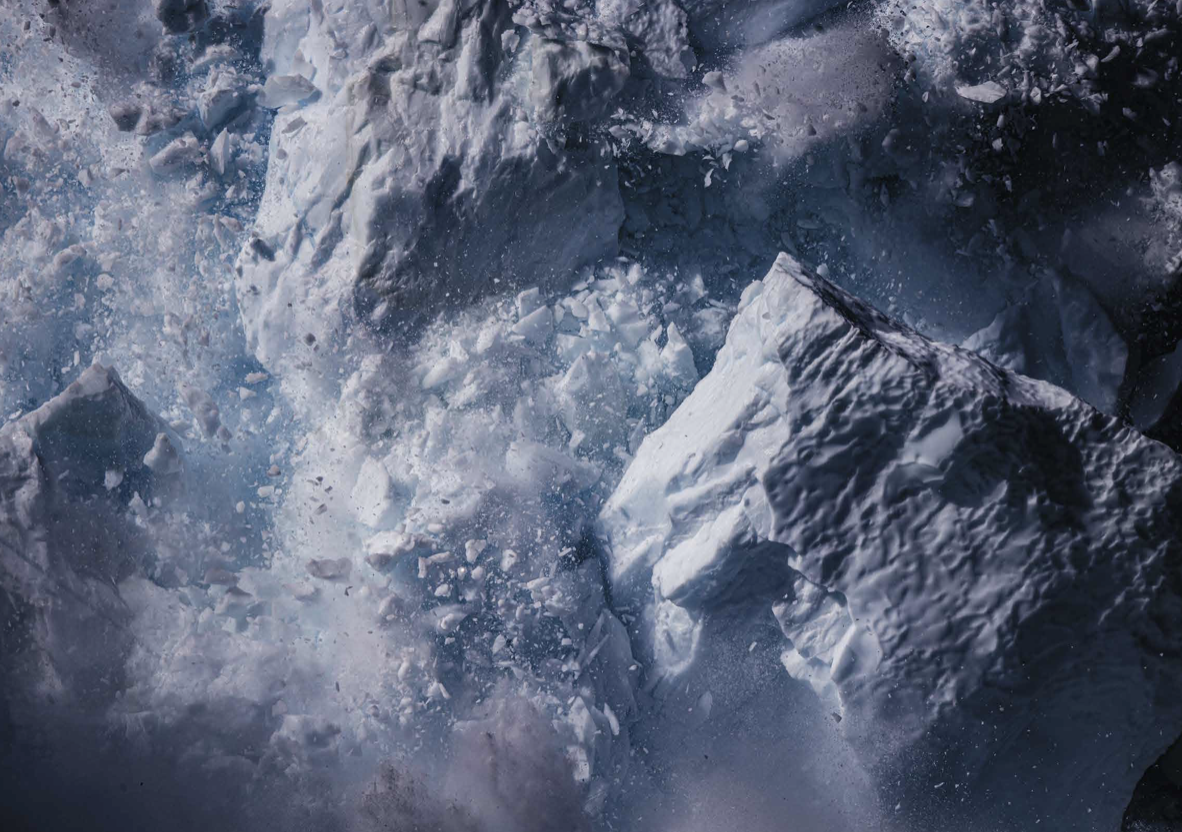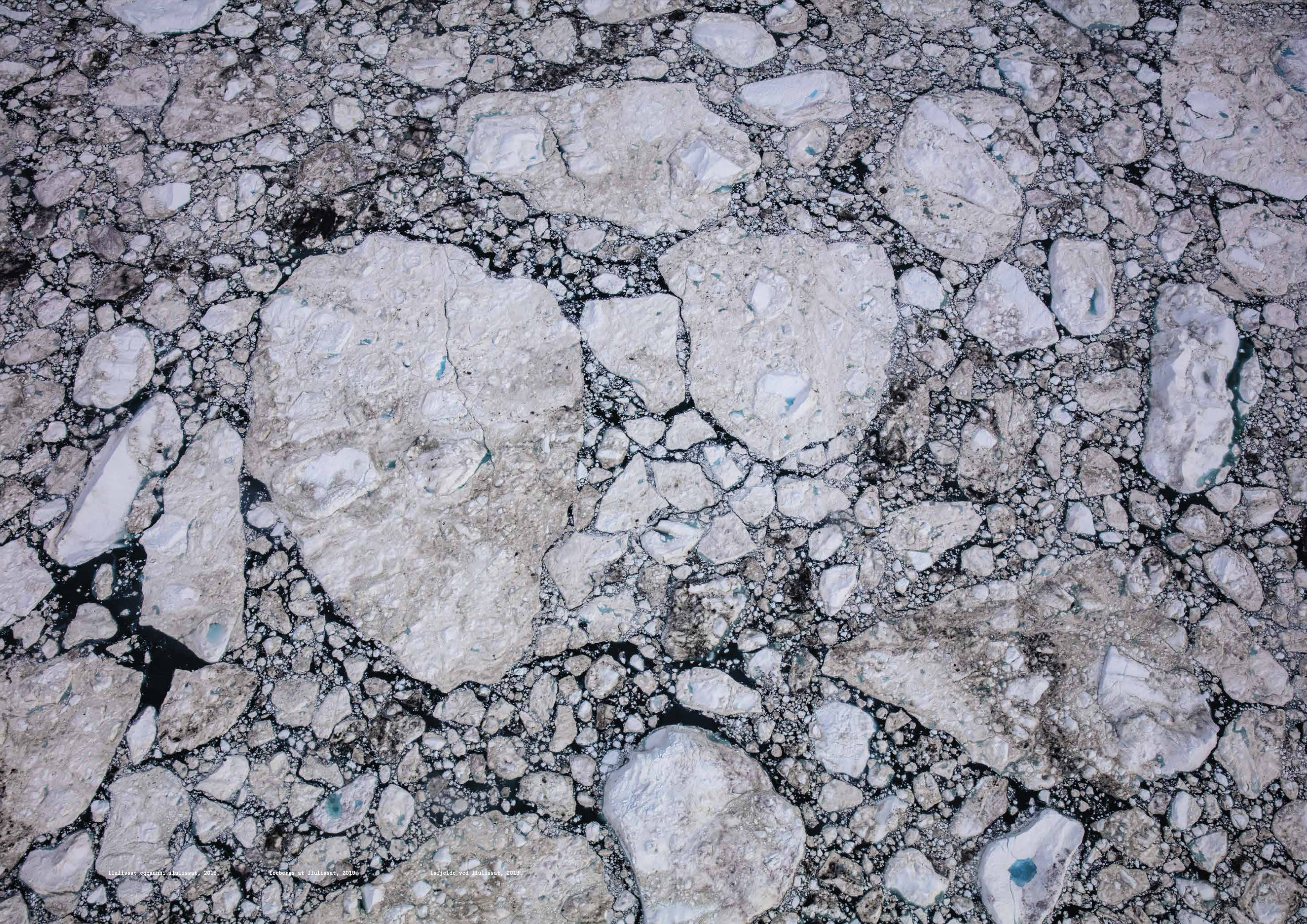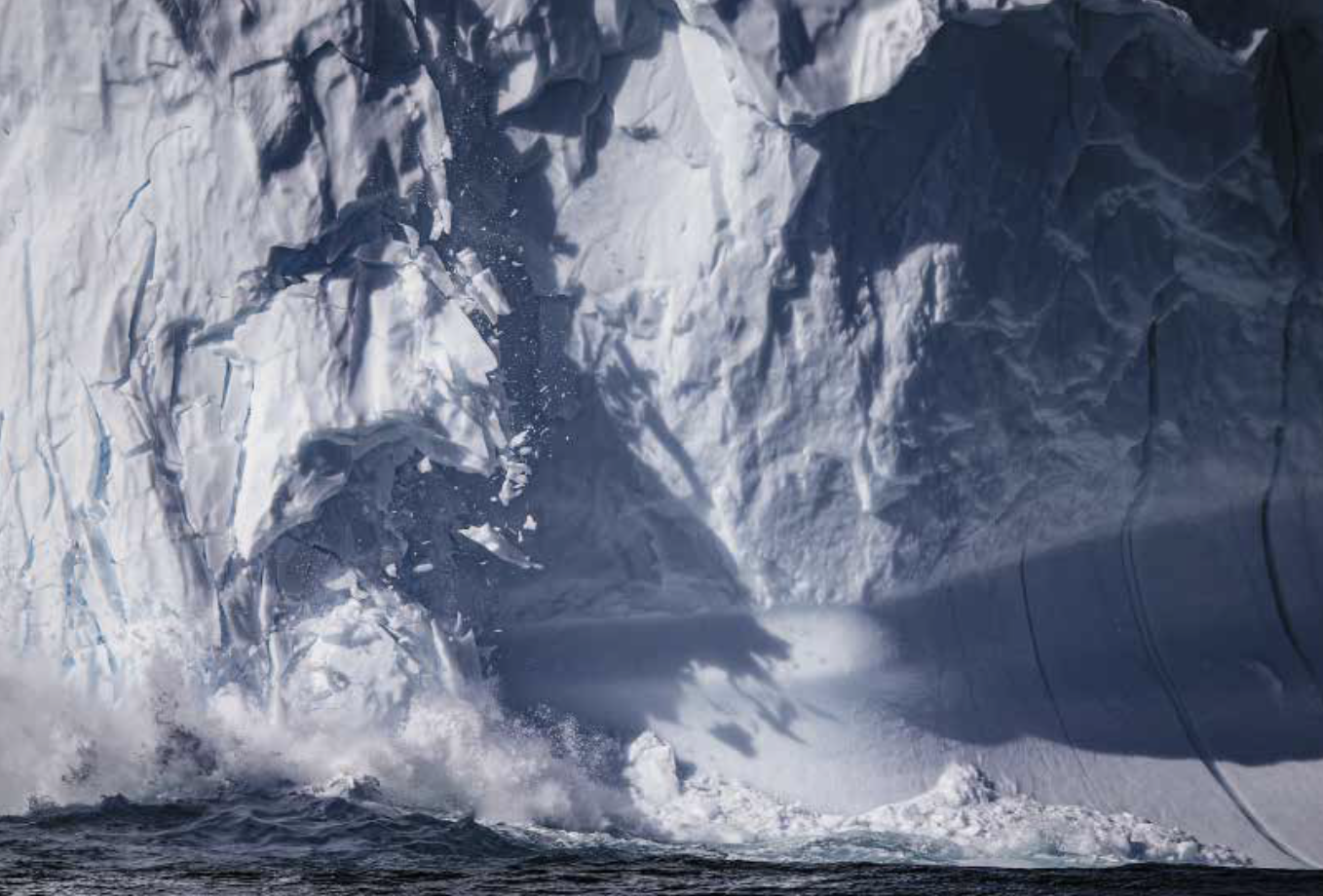CALVING

- Why does Sermeq Kujalleq calve?
- The journey of an iceberg through the Icefjord
- 10% of the icebergs from Greenland’s ice sheet calve from Sermeq Kujalleq
- Calving creates huge waves
You solve the tasks by using
- Text
- Audio
- Drawing tools
- Images
In the book you can find more information about the subject.
When a glacier calves, icebergs of different sizes break off from the front.
The icebergs float with the ocean currents into the world.

How can gravity affect calving?
How can temperature changes affect calving?
Temperature changes can be natural or manmade. Describe the difference.
The icebergs calved from the glacier Sermeq Kujalleq travel on through the Icefjord.
In the picture you see an iceberg on its way through the Icefjord.

At the mouth of the Icefjord is a moraine. How was that formed and how high is it?
In the model on page 46 are six technical concepts about the ice. Explain each concept.
Here are two persons on a bench at the Icefjord (p. 47). Write a poem based on this picture.
Your poem:
Here you see an aerial photograph of the icebergs at Ilulissat 2019.
The glacier calves about 40 to 50 km³ each year.
It is one of the fastest in the world.

If 10% of the icebergs from Greenland amount to 50 km³, then how many km³ are 100%?
Water is a precious resource. Would it be possible to melt the water from the ice sheet and use it? Why / why not?
Sermeq Kujalleq is the fastest glacier on the northern hemisphere. What other glaciers are there? Use the Internet.
As it is not known exactly when the glacier calves or an iceberg turns around, it can be dangerous to be on the sea or at the coast in Ilulissat.

On pages 54-55 are four pictures with a kayak. Write a story based on these pictures.
Are there other places in the world where tsunamies have hit? Where and when?
Are there any other natural phenomena, dangerous to humans?
When a glacier calves, icebergs of different sizes break off from the front.
The icebergs float with the ocean currents into the world.

How can gravity affect calving?
How can temperature changes affect calving?
Temperature changes can be natural or manmade. Describe the difference.
The icebergs calved from the glacier Sermeq Kujalleq travel on through the Icefjord.
In the picture you see an iceberg on its way through the Icefjord.

At the mouth of the Icefjord is a moraine. How was that formed and how high is it?
In the model on page 46 are six technical concepts about the ice. Explain each concept.
Here are two persons on a bench at the Icefjord (p. 47). Write a poem based on this picture.
Your poem:
Here you see an aerial photograph of the icebergs at Ilulissat 2019.
The glacier calves about 40 to 50 km³ each year.
It is one of the fastest in the world.

If 10% of the icebergs from Greenland amount to 50 km³, then how many km³ are 100%?
Water is a precious resource. Would it be possible to melt the water from the ice sheet and use it? Why / why not?
Sermeq Kujalleq is the fastest glacier on the northern hemisphere. What other glaciers are there? Use the Internet.
As it is not known exactly when the glacier calves or an iceberg turns around, it can be dangerous to be on the sea or at the coast in Ilulissat.

On pages 54-55 are four pictures with a kayak. Write a story based on these pictures.
Are there other places in the world where tsunamies have hit? Where and when?
Are there any other natural phenomena, dangerous to humans?



